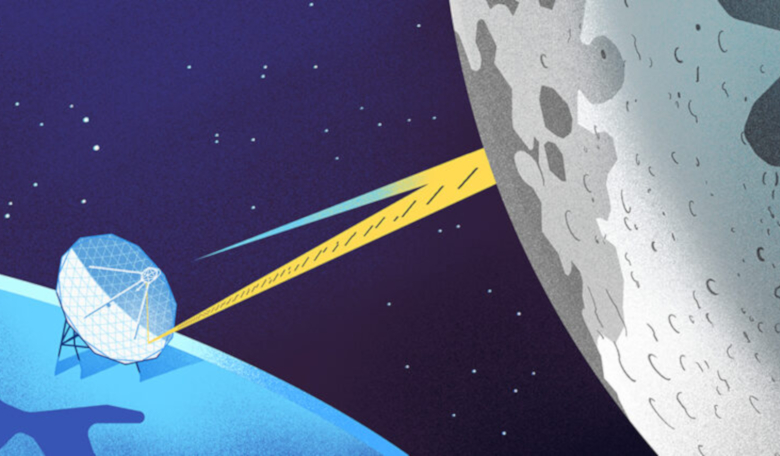A European team of scientists have bounced, for the first time ever, a LoRa® (long range) message off the Moon. The feat set a new record of 730,360 kilometres for the furthest distance a LoRa message has ever travelled. It was also the first time a data message was bounced using an off-the-shelf small RF (radio-frequency) chip. For a brief moment in time the entire message “PI9CAM” (the call sign of the telescope) was in space on its way from Earth to the Moon and back.
It also proved that LoRa technology, used for many IoT (Internet of things) applications, can cover such great distances, and that it is possible to send and receive low-powered messages from the Moon. This could become relevant for future lunar communications.
The team, some of them licensed radio amateurs, consisted of Jan van Muijlwijk (CAMRAS), Tammo Jan Dijkema (CAMRAS), Thomas Telkamp (Lacuna Space) and Frank Zeppenfeldt (ESA). To achieve the transmission, the team used the Dwingeloo radio telescope, operated by the CAMRAS foundation in the Netherlands. The radio telescope has a history of being used in amateur radio experiments and is now often used for moon bounces.
Nicolas Sornin, co-inventor of LoRa, said: “This is a fantastic experiment. I had never dreamed that one day a LoRa message would travel all the way to the moon and back. I am impressed by the quality of the data captured. This dataset is going to become a classic for radio communications and signal processing students. A big thumbs up to the team and CAMRAS foundation for making this possible.”
Thomas Telkamp, CTO of Lacuna Space, a global connectivity provider for the Internet of Things, said: “Seeing the message coming back from the Moon was exhilarating. From the round-trip time we were able to calculate the distance to the moon, matching very well the predicted values of NASA's JPL Horizons ephemeris system. We even used the echo to see the shape of the moon, which we didn’t imagine we could.”
European scientists bounced first ever LoRa message off the Moon











